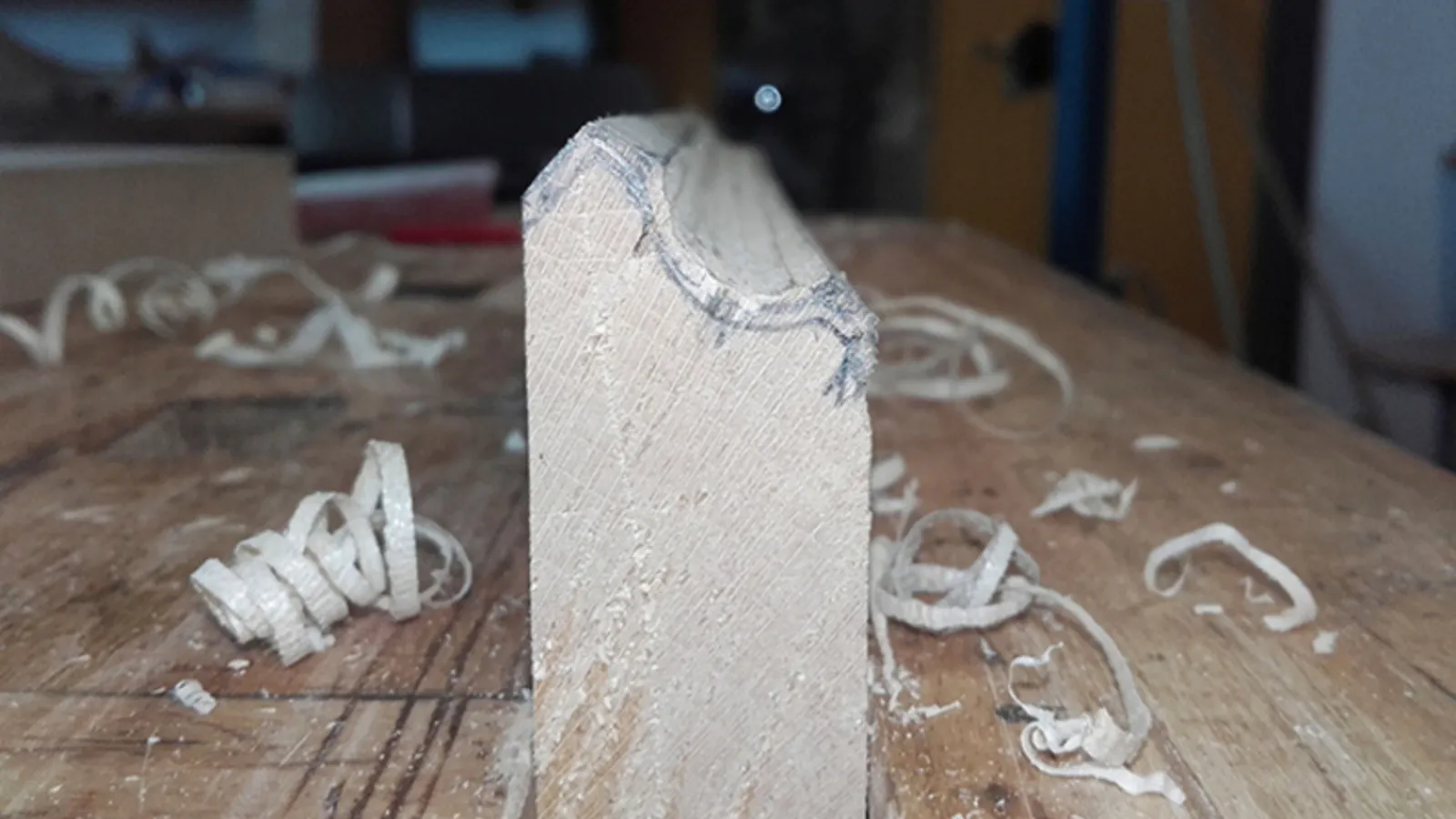Wood | Round Biedermeier Table from the Stiftung Stadtmuseum Berlin
The table with a round tabletop was probably made during the Biedermeier period and, in addition to classical features of the era, also shows Gothic influences.

Project duration: 2015 - 2019
Loan: Stiftung Stadtmuseum Berlin
Dating: ca. 1830 - 1840
Project description
The table with a round tabletop was most likely made during the Biedermeier period and, in addition to classical features of the era, also shows Gothic influences. Typical of the Biedermeier period is that much furniture was made for the middle classes. The top of the table is attached to a hexagonally shaped column, which is supported by three feet shaped as volutes. These in turn stand on small brass wheels so that the table could be moved with ease. The object is veneered and shows marquetry mostly on the hexagonal column and the legs, which is composed of dark and light veneer parts.
The first examinations of the table revealed that six different types of wood were used. It is very likely that pine, white oak, chestnut and hornbeam were used for the blind wood, while the veneers are probably mahogany and maple.
Conservation and restoration
The object came to the University of Applied Sciences Potsdam in a very poor condition. In addition to heavy soiling of the surface, there were above all signs of wear, missing sections on the profiles and damage to the wooden joints. The restoration goal was to make the table tangible again for the visitors of the Stadtmuseum Berlin and to present it in the future with the matching chairs in the exhibition. First of all, all constructive parts were detached from the still existing connections so as not to cause any additional damage. Supplementary pieces of hardwood were made for the damaged connections and inserted with bone glue. All three feet were aligned using wedges and reattached with animal glue. As further measures, strengthening and supplementary work was carried out on profile strips and cracks in the table top were closed with balsa wood in order to protect the object in the long term from a conservation point of view as well. Furthermore, the surface was cleaned with gels, thus carefully removing the layer of dirt. Finally, the additions were retouched with watercolours using the tratteggio technique. The method was carried out according to the restoration-ethical maxim that the additions should be distinguishable from the original substance on closer inspection despite a colour adjustment.
Project participants
Project support
Project support
Students
Janna Simone Mostert




